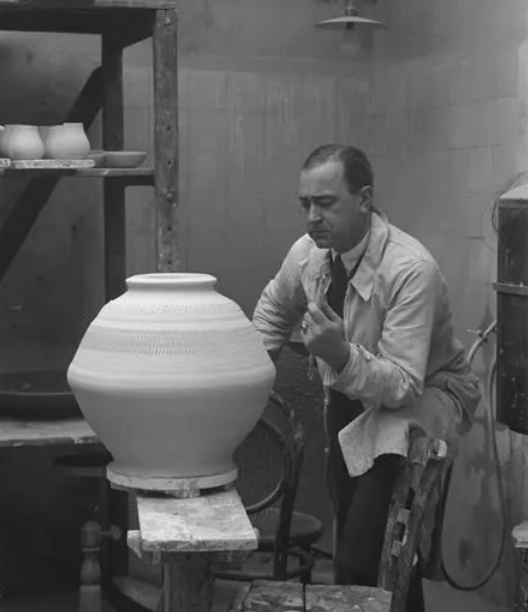Jean Besnard (1889-1958)
Jean Besnard is an emblematic ceramicist of the Art Déco period and the 1930s.
Besnard is first and foremost the son of two major artists: his father Albert Besnard was a painter and a decorator, while his mother Charlotte Dubray was a sculptor. Quite naturally he decided to pursue an artistic career from a young age: he first trained as a painter before developing an interest in ceramics through Paul Jacquet and Etienne Avenard.
He completely devoted himself to the medium after 1910.

Show full biography
Besnard is first and foremost the son of major artists: his father is painter and decorator Albert Besnard and his mother sculptor Charlotte Dubray. It is thus quite naturally that he chooses to pursue an artistic career at a young age: he first receives training in painting before getting interest in ceramics through contact with Paul Jacquet and Etienne Avenard.
He completely devotes himself to it from 1910.
His works are thus the occasion to mix up different clays of various colours and to elaborate new and inventive enamelling process which break off with tradition. By the way, the invention of “crispé“ (contorted) white enamel, which shows shagreen-like cracks, is attributed to him. Likewise, he engraves the paste with a small toothed wheel, and uses textile elements, of lace and tulle, in order to stamp original patterns on his pieces. Thus, ceramics is to Jean Besnard, who is guided by his imagination, a place of constant artistic and technical research.
His works offer a variety of grey, pink, pale ocher, rust-co- loured, green and blue, inspired by his observation of Divi- sionnist and Impressionnist painting whose vivid colours sometimes seem brushed and matted. Just like these paintings, Besnard’s works are the occasion of a deep contemplation of the mixed-up colours which indeed create a meditative and almost mystical atmosphere.
Jean Besnard encounters great success at the beginning of the 1920s.
His works are then exhibited to the greatests sa- lons of his time: Salon des Artistes Décorateurs, Salon des Tuileries and Salon d’Automne. In 1925, he even receives the silver for for his ceramist work at the Paris Exposi- tion des Arts décoratifs et industriels. Besnard is also reco- gnized by his peers: he belongs to a trendy artistic circle, the one of the 1930s Paris: he is notably a close friend of decorator Jacques Adnet.



